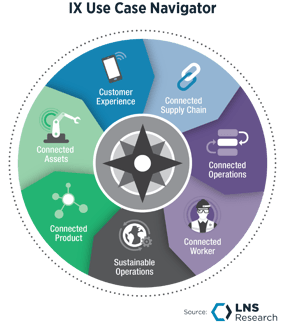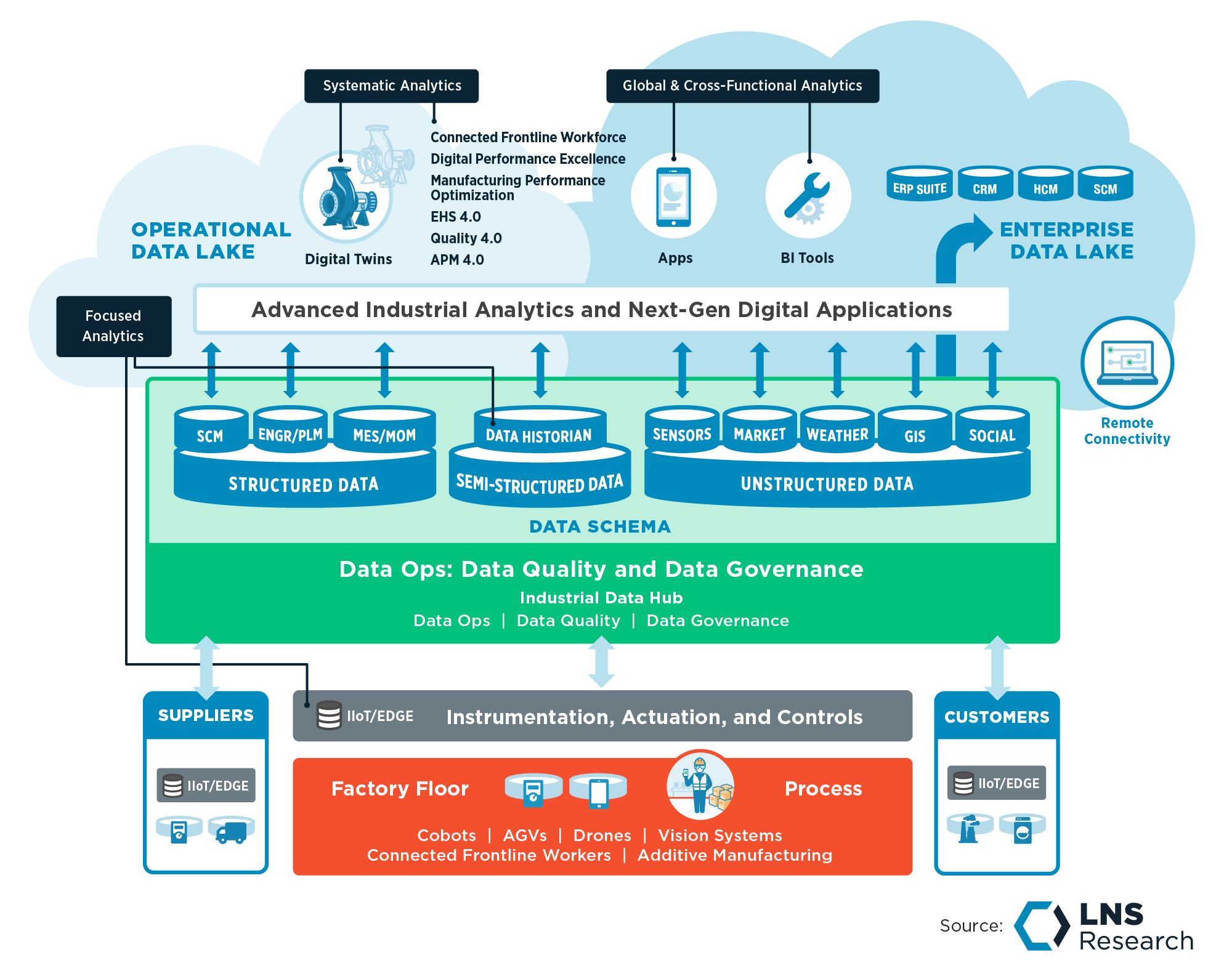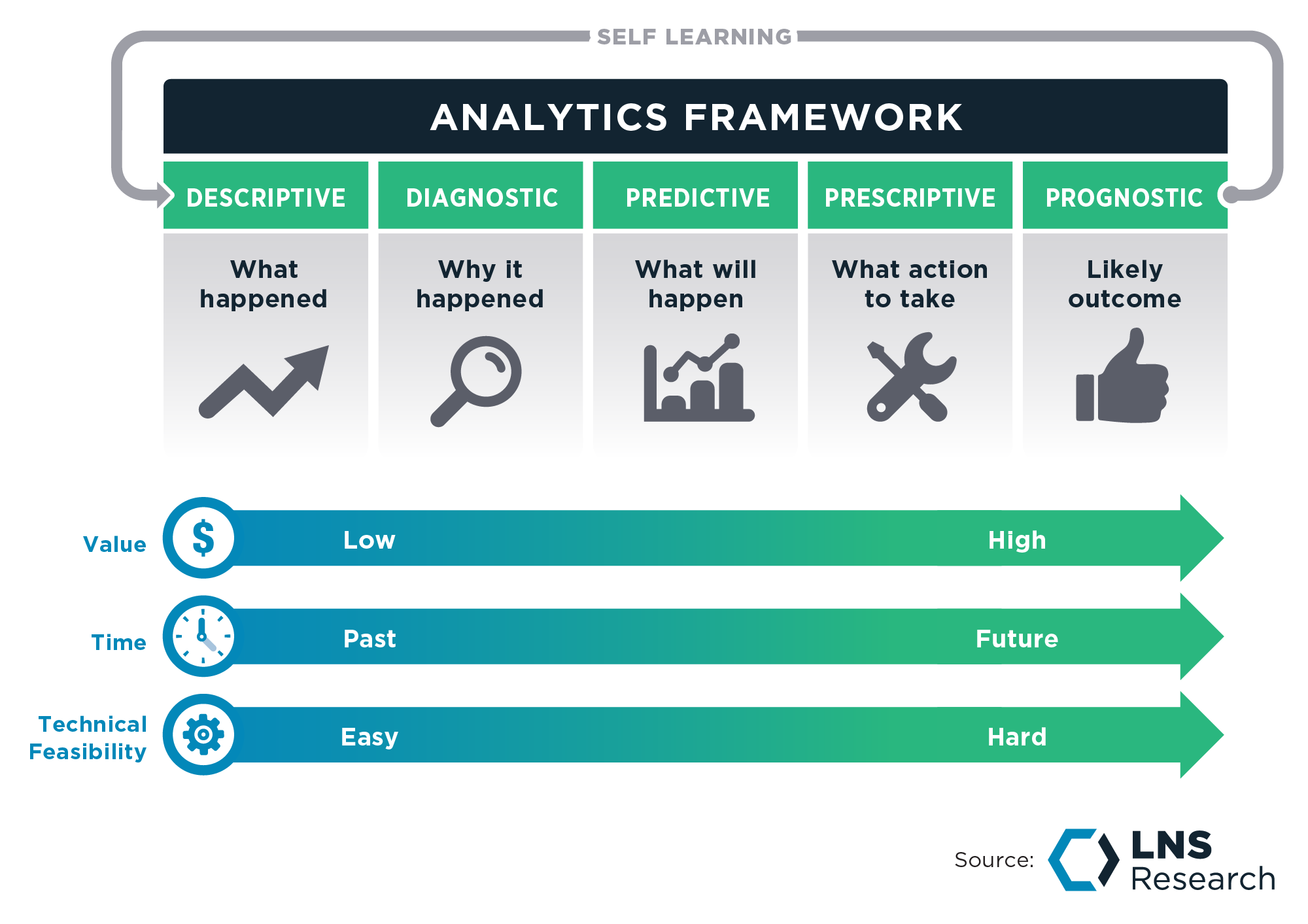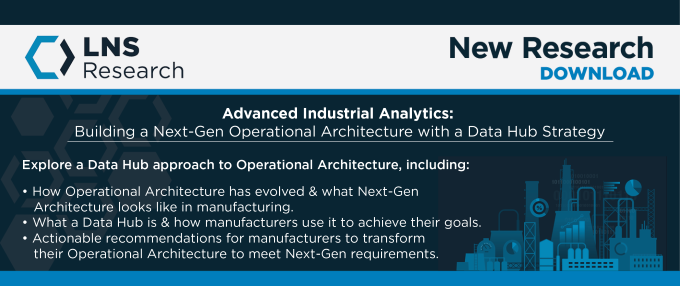The average Industrial Transformation (IX) program has about ten strategic initiatives under its wings - Factory of the Future, Quality 4.0, Connected Frontline Workforce, ESG 4.0, and Smart Supply Chain, to name a few. While these programs differ in scope, organizational levels, use cases, and technologies required, they are almost always aligned in one common foundation.
That is, each of these initiatives aims to leverage Advanced Analytics to make informed decisions. Based on this premise, one could argue that this makes (advanced) analytics the de facto common denominator of Industrial Transformation.

However, LNS Research's discussions with the manufacturing community have shown that, in most of these transformation programs, what most companies refer to as Advanced Analytics is not that advanced after all. Obfuscated by an overcrowded vendor landscape, marketing hype, and buzzword frenzy, the manufacturing community does not understand the Advanced Analytics market accurately. It is often seen to place big bets on the wrong horses or at the wrong time.
This blog post aims to solve that problem.
Advanced Industrial Analytics Explained
Analytics and Architecture is one of the major coverage areas for LNS Research, and we have extensively researched this topic over the past few years. In this blog post, we will define the emerging space of Advanced Industrial Analytics, what it is and what it isn't, and provide some guidance for the increasing number of manufacturers going through Industrial Transformation on strategizing and executing it.
In this section, we will list and briefly explain five must-have high-level criteria that make up an Advanced Industrial Analytics solution.
-
-
-
Significant presence in Industrial Operations
This first criterium puts the "Industrial" in Advanced Industrial Analytics (AIA). Solutions serving the industrial market must be tailored to the industry with pre-built use cases and productized offerings ready to be used out-of-the-box and accelerate time to value for end users. Further, manufacturers don't want to implement a new AIA solution for every use case, so there is also a need to be able to span across a broad set of industrial use cases.
-
Built on a digitally native, flexible, and scalable architecture
Traditional analytics were primarily built on client-server architectures within the constraints of the ISA-95 framework, where data flow was hierarchical in nature, thereby creating gaps and data silos. In today's Industry 4.0 world, companies are flattening this architecture by enabling machine connectivity and data transfer between IT and OT with many-to-many architectures.
Some leading manufacturers have invested heavily in building a common data schema to bring together data from the shop floor and the enterprise systems that can feed analytics in the Cloud, Edge, or on-prem systems. Further, many IX Platform providers now offer IIoT, AR/VR, No-Code Dev, AI/ML, Cloud, and Edge capabilities as a service.
Advanced Industrial Analytics solutions must be architected to take advantage of all these capabilities as much as possible.
-
Analyze large sets of heterogeneous data across IT and OT
While several traditional analytics only cover structured and (in some cases) semi-structured data, one of the biggest differentiators of Advanced Industrial Analytics is the inclusion of unstructured data. However, there is an argument to be made that there is more value in focusing on adding conditioning, contextualization, and abstraction to just structured, semi-structured, and sensor data, including unstructured data as part of the common data schema does have its benefits as recently showcased by the emergence of large language models.
Including these multiple types of data in the common data schema paves the way for IT-OT Convergence and subsequent transformative use cases such as leveraging vision systems for automated quality inspection, finding patterns in work instructions using natural language processing, real-time batch releases using ML/AI modeling, etc.
-
Analytics Levels: Go beyond Predictive
LNS Research views Advanced Industrial Analytics as an incremental journey consisting of five steps, ranging from Descriptive to Prognostic Analytics. While most industrial companies are relatively mature in adopting Descriptive, Diagnostic, and even Predictive models, top-performing companies have added Prescriptive and Prognostic capabilities that provide actionable recommendations and likely outcomes to the predictions.
Some of the more advanced companies are taking it a step further by including these models as part of a self-learning system, closing the loop on the insights from analytics. This includes not only providing predictions, prescriptions, and prognoses but also going back to check if they were accurate and using that information to improve the model's accuracy for future analyses.

-
Target multiple specific layers and roles in the organization
Finally, Advanced Industrial Analytics use cases must extend across multiple organizational layers, as shown in the table below, including global/cross-functional, systematic, and focused. Given the aforementioned architectural constraints, traditional analytics have mainly targeted transactional data at the global/cross-functional level or process data at the unit level. Advanced Industrial Analytics should ideally target multiple levels and roles.

Technically Speaking…
Now let's look closely at some technical functionalities that should be included in Advanced Industrial Analytics solutions, including that it;
✔️ Must provide either a non-licensable platform with licensable analytics-based applications or a licensable analytics platform with or without pre-developed analytics applications.
✔️ Be built on a modular, flexible, and scalable architecture that is deployable on public and private Cloud instances, at the Edge, on-premise, or a combination thereof.
✔️ Provide a no-code/low-code development environment for business users to create lightweight applications using drag-and-drop type interfaces. However, the applications/platform must be able to be customized and/or extended with code (Python, R, Java, C++, JSON, etc.) if needed.
✔️ Include an integrated workflow/orchestration engine.
✔️ It may have unique capabilities, such as BOTS, RPA, video, LiDAR, geospatial, etc.
Additionally, LNS Research has also defined what does not constitute an Advanced Industrial Analytics solution, as listed below:
❌ Spreadsheets and Business Intelligence tools
❌ Relational/time-series/unstructured databases and database infrastructure management tools (including individual hyper-scaler components)
❌ Enterprise systems, OT applications, and pervasive sensing systems that contain minimal analytics functionalities but are not inclusive of the criteria listed above.
❌ Generic analytics toolkits and statistical packages
❌ Industrial IoT platforms that do not feature Advanced Analytics
❌ Standalone no-code/low-code, workflow, and application development tools
❌ Analytics solutions focused only on specific use cases that do not apply to operations (supply chain forecasting/design & engineering analytics, etc.)
Summary & Recommendations
According to LNS Research's recent Analytics That Matter (2022) studies, about a third of surveyed companies are implementing Advanced Industrial Analytics initiatives, and a third more are greenlighting pilots and proofs-of-concept. At this pivotal Crossing-the-Chasm stage, it is becoming increasingly essential for manufacturers to be aware of the technology landscape and the vendor community's continued innovation to make deployment easier with faster time to value.
Manufacturers should also assess and transform their internal people, process, and technology resources to successfully scale Advanced Industrial Analytics. Here are some recommendations to start with:
-
-
-
Don't do analytics for analytics' sake: An Advanced Industrial Analytics initiative, like any other strategic initiative, should be aligned with the company's overall business objectives. Understand your C-suite's objectives and build your Analytics strategy to deliver on those objectives.
-
Fix your data first: It is easy to be tempted by the advanced capabilities flaunted by vendor offerings. However, good data is a fundamental prerequisite to good (and accurate) analytics. This includes hiring the right personnel (data engineers, solution architects, data stewards, etc.) and building governance processes to ensure high data quality and context levels.
-
-
-
Beware of the Power of Prepositions: Ensure that analytics is not being done "to" or "for" but "with" the business. Bring the operations and rest of the value chain, especially the frontline workforce, along the journey to ensure a smooth and effective change management process.
-
Take an unbiased approach to technology selection: Advanced Industrial Analytics is one of the industry's most crowded technology markets, and, as they say, with crowd comes chaos. Hence, to help manufacturers navigate the chaos and make an informed decision in their technology selection, LNS Research has been working on a Solution Selection Matrix (SSM). The two-by-two matrix scores qualified solutions on their product, potential, and presence separately for the Discrete, Batch, and Process industries. Keep an eye out for our SSM coming soon.
